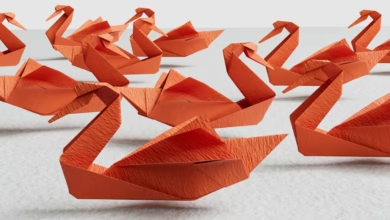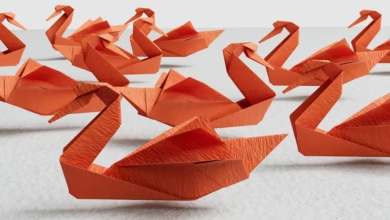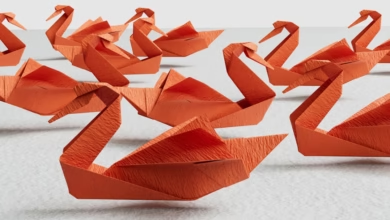Shining a Light on Metals: Enhancing Investment Portfolios Through Diversification and Stability

In an ever-evolving financial landscape, investors are continually seeking ways to safeguard and enhance their portfolios. Amidst the fluctuations of stocks and bonds, metals have emerged as a compelling alternative, offering unique benefits that can significantly diversify investment strategies. This article delves into the critical role metals play in portfolio diversification, highlighting their intrinsic value and resilience during economic downturns. We will explore the distinctions between precious and industrial metals, examining how each category contributes to a balanced investment approach. Additionally, we will discuss the protective benefits that metal investments offer, especially in times of market volatility. By understanding the multifaceted roles of metals, investors can make informed decisions that bolster their portfolios against uncertainty and pave the way for long-term financial stability.
- 1. **"The Value of Metals: Understanding Their Role in Portfolio Diversification"**
- 2. **"Precious vs. Industrial: How Different Metals Contribute to Investment Strategies"**
- 3. **"Navigating Market Volatility: The Protective Benefits of Metal Investments"**
1. **"The Value of Metals: Understanding Their Role in Portfolio Diversification"**
Metals, particularly precious and industrial varieties, play a significant role in diversifying investment portfolios due to their unique properties and behaviors in relation to economic conditions. Precious metals like gold, silver, platinum, and palladium are traditionally viewed as safe-haven assets. Investors often turn to them during periods of economic uncertainty, inflation, or geopolitical tensions. Their intrinsic value, driven by factors such as scarcity and demand, creates a reliable store of wealth, making them a hedge against currency fluctuations and market volatility.
On the other hand, industrial metals, such as copper, aluminum, and nickel, are closely tied to economic growth and infrastructure development. Their demand tends to rise in alignment with global economic expansion, making them valuable for investors looking to capitalize on growth trends. The cyclical nature of these metals can complement the more stable performance of precious metals, providing a balance within a diversified portfolio.
Moreover, metals tend to exhibit low correlation with traditional asset classes like stocks and bonds. This characteristic allows them to offer a buffer during market downturns, as their prices often move independently of broader market trends. By including a mix of metals in an investment portfolio, investors can reduce overall risk and enhance potential returns.
As the global economy evolves, factors such as technological advancements, renewable energy initiatives, and changing consumer preferences further influence the demand for various metals. For instance, the rise of electric vehicles has significantly boosted the demand for lithium and cobalt, while the transition to renewable energy sources is increasing the importance of silver in solar panel production.
In summary, the strategic inclusion of metals in an investment portfolio can enhance diversification, mitigate risks, and capitalize on unique market opportunities. Understanding the distinct roles that different metals play, along with their correlations to broader economic trends, is essential for investors aiming to build resilient and well-rounded portfolios.
2. **"Precious vs. Industrial: How Different Metals Contribute to Investment Strategies"**
When it comes to diversifying investment portfolios, metals play a significant role, particularly when distinguishing between precious and industrial metals. Each category offers unique characteristics and benefits that can complement an investor's overall strategy.
Precious metals, such as gold, silver, platinum, and palladium, are traditionally viewed as safe-haven assets. They tend to retain value during economic uncertainty and act as a hedge against inflation and currency fluctuations. Gold, in particular, is often considered a store of value, providing a reliable means of preserving wealth over time. Investors often flock to precious metals during market volatility, which can lead to price appreciation and help stabilize portfolios. Furthermore, these metals are not only sought after for their investment potential but also for their intrinsic value in jewelry and other luxury goods, adding another layer of demand.
On the other hand, industrial metals, including copper, aluminum, nickel, and zinc, are closely tied to economic growth and infrastructure development. Their prices fluctuate based on supply and demand dynamics influenced by global industrial activity. For example, copper is a crucial component in electrical wiring and renewable energy technologies, making it particularly relevant in the context of green energy initiatives. Investing in industrial metals can provide exposure to sectors expected to benefit from economic expansion, such as construction and manufacturing. However, these metals can be more volatile, as they are often subject to cyclical trends and geopolitical factors that affect supply chains.
By including both precious and industrial metals in an investment portfolio, investors can achieve a balanced approach that harnesses the stability of precious metals while also capturing the growth potential associated with industrial metals. This diversification can help mitigate risk, as the performance of these metals often moves independently of one another. For instance, during periods of economic downturn, precious metals may rise as investors seek safety, while industrial metals may decline due to reduced demand. Conversely, in times of economic recovery, industrial metals may outperform as construction and manufacturing activities ramp up.
Ultimately, understanding the distinct roles of precious and industrial metals allows investors to tailor their strategies according to their risk tolerance, economic outlook, and investment goals. By strategically incorporating both categories, investors can build a more resilient portfolio capable of weathering various market conditions.
3. **"Navigating Market Volatility: The Protective Benefits of Metal Investments"**
In times of economic uncertainty and market volatility, investors often seek refuge in assets that can provide stability and protection against fluctuations. Metals, particularly precious metals like gold and silver, have historically served as a hedge against inflation and currency devaluation. When stock markets experience downturns or geopolitical tensions rise, the demand for these tangible assets often increases, leading to a surge in their prices.
One of the primary reasons metals are considered protective investments is their intrinsic value. Unlike stocks and bonds, which can be heavily influenced by market sentiment and corporate performance, metals possess a physical form that inherently holds worth. This characteristic makes them less susceptible to the same level of volatility that can affect paper assets. For instance, during the 2008 financial crisis, while stock markets plummeted, gold prices soared, demonstrating its appeal as a safe haven.
Moreover, metals can provide diversification benefits within an investment portfolio. By incorporating metals into a broader asset allocation strategy, investors can reduce overall portfolio risk. The correlation between metal prices and other financial assets is often low; thus, when equities decline, metals may retain or even increase in value. This inverse relationship can help stabilize returns and mitigate losses during turbulent times.
Additionally, the growing interest in sustainable and ethical investing has further bolstered the role of metals, particularly those used in technology and renewable energy sectors, such as copper and lithium. These industrial metals are not only vital for modern technology but also for the transition to a greener economy, making them attractive options for long-term investment.
In summary, navigating market volatility through metal investments offers protective benefits that can enhance an investor's portfolio. By acting as a safe haven during economic downturns, providing intrinsic value, and contributing to diversification, metals remain a compelling choice for those seeking to safeguard their financial future amidst uncertainty.
In conclusion, incorporating metals into investment portfolios offers a multifaceted approach to diversification, enhancing both security and potential returns. As explored in this article, the intrinsic value of metals—ranging from precious to industrial—provides investors with unique opportunities that can weather market fluctuations. Precious metals like gold and silver serve as reliable hedges against inflation and economic uncertainty, while industrial metals contribute to growth potential in emerging sectors. Furthermore, during periods of market volatility, metals can act as a stabilizing force, safeguarding investments from drastic downturns. In an increasingly unpredictable financial landscape, a well-rounded portfolio that includes a strategic allocation of metals not only mitigates risk but also positions investors to capitalize on future market trends. By recognizing the diverse roles that metals play in investment strategies, investors can make informed decisions that enhance their financial resilience and long-term success.





